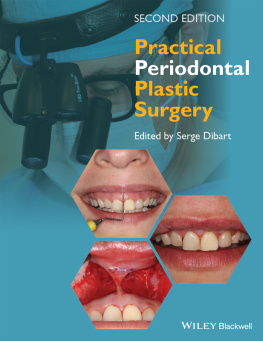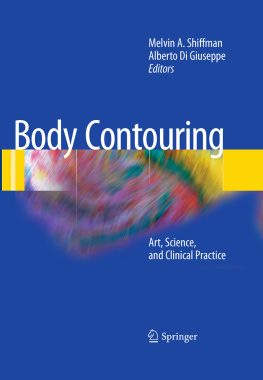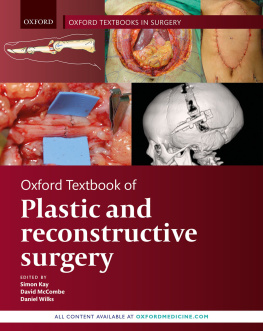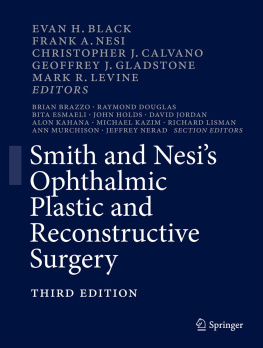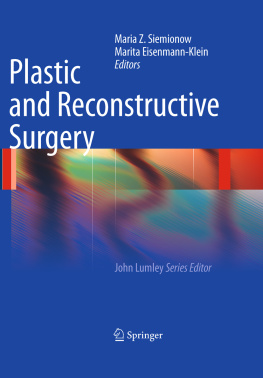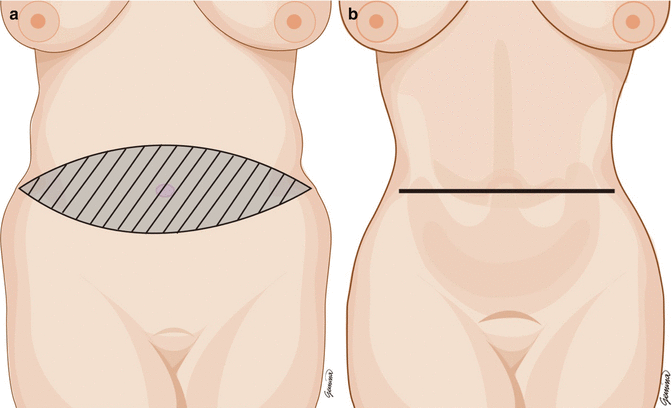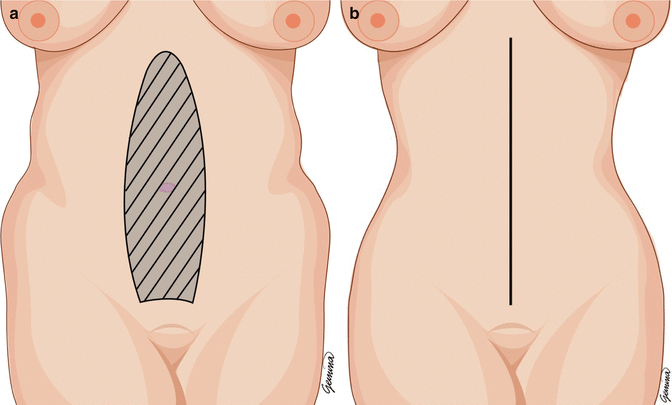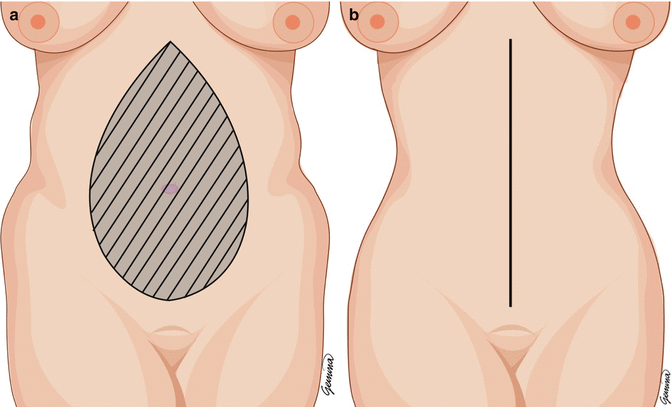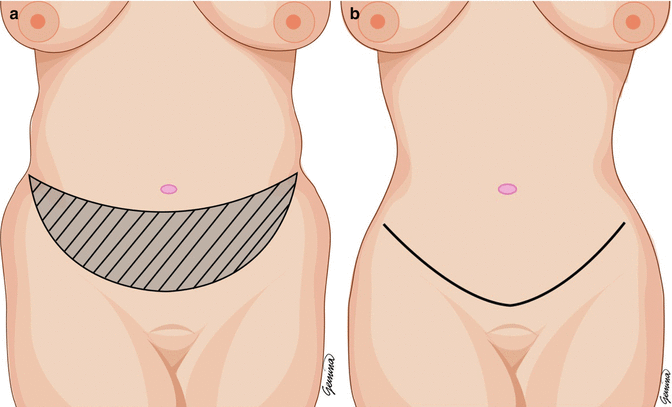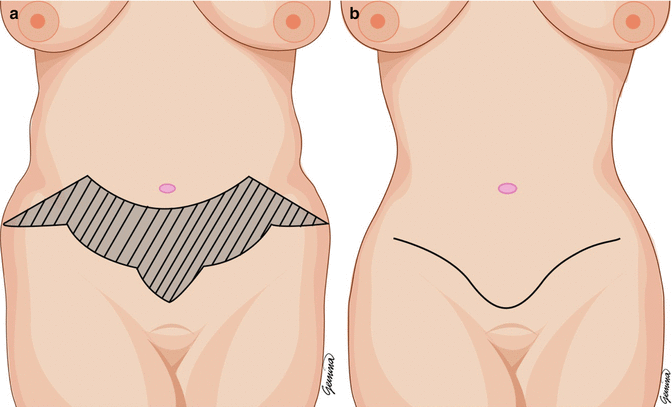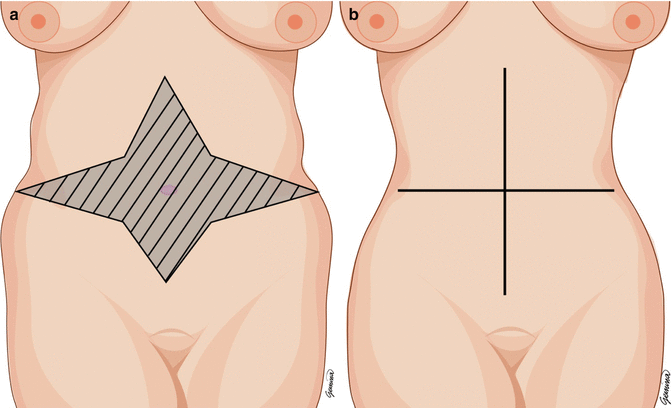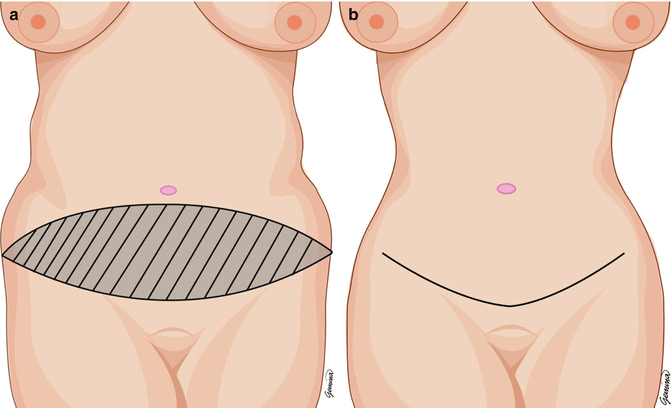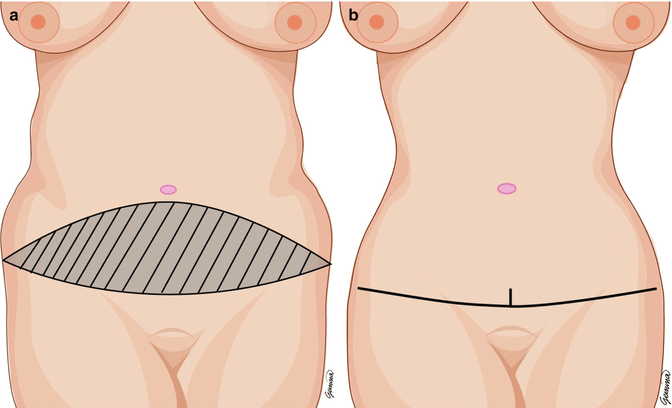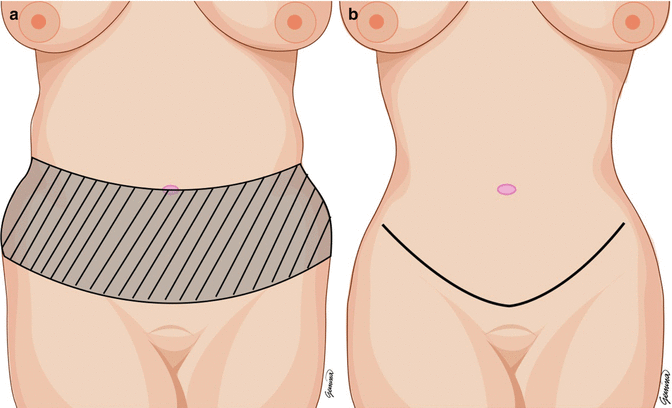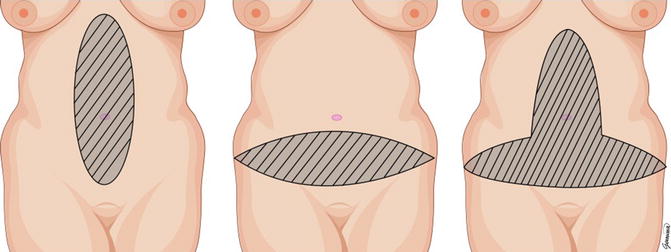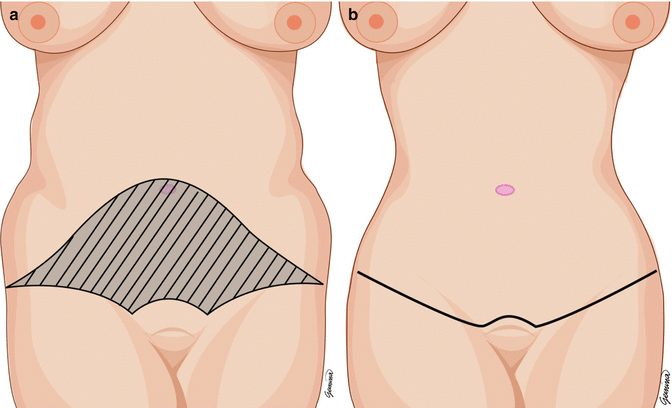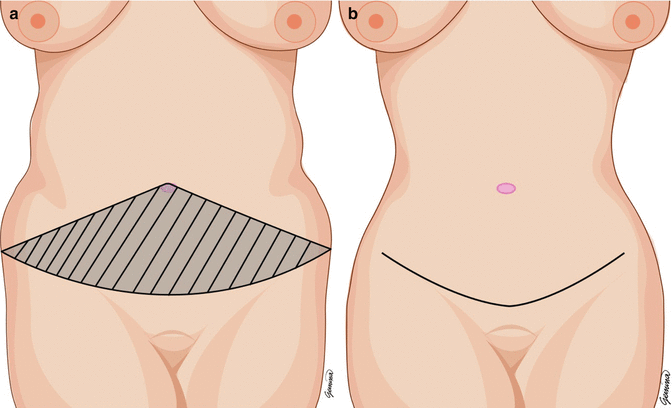1.1 Introduction
Abdominoplasty deals with the excess abdominal pannus and scars of the abdominal wall and may be used to correct diastasis of the rectus muscles and sometimes the looseness of the external oblique muscles. It is an invasive surgery and carries a small but significant morbidity and mortality rate especially when involved with other procedures, such as liposuction, at the same time. It is a procedure that sculpts the body, should have the incision to suit the particular body type, and have the widened diastasis recti closed to prevent postoperative bulging of the abdomen. One of the critical aspects of abdominoplasty for esthetically acceptable results is the umbilicoplasty.
1.2 History
The first limited dermolipectomy was reported by Demars and Marx [).
Fig. 1.1
( a ) Area of excision. ( b ) Final scar (Kelly [])
Gaudet and Morestin [] described a low transverse elliptical abdominal lipectomy.
Fig. 1.2
( a ) Area of excision. ( b ) Final scar (Weinhold [])
Babcock [). This allowed for more contouring of the lower abdominal excess.
Fig. 1.3
( a ) Area of excision. ( b ) Final scar (Babcock [])
Fig. 1.4
( a ) Area of excision. ( b ) Final scar (Schepelmann [])
Frist [). If required, he removed of the umbilicus with a crescent excision and transplanted it to its new place at the end of the case as a composite graft.
Fig. 1.5
( a ) Area of excision. ( b ) Final scar (Thorek [])
In 1931, Flesch-Thebesius and Wheisheimer [).
Fig. 1.6
( a ) Area of excision. ( b ) Final scar (Pick [])
Fig. 1.7
( a ) Area of excision. ( b ) Final scar (Galtier [])
Fig. 1.8
( a ) Area of excision. ( b ) Final scar (Vernon [])
Fig. 1.9
( a ) Area of excision. ( b ) Final scar (Dufourmental and Mouly [])
Gonzalez-Ulloa in 1960 [). Staying below the inguinal crease not only had a less conspicuous scar but also had the added advantage of some degree of lateral thigh lift.
Fig. 1.10
( a ) Area of excision. ( b ) Final scar (Gonzalez-Uloa [])
There were three main categories of abdominoplasty up to 1967:
The transverse incision
The vertical incision
A combination of vertical and transverse incisions (Fig. )
Fig. 1.11
( Left ) transverse incision; ( middle ) vertical incision; ( right ) combined incisions
After 1967, there were many modifications of Callias technique, but surgeons started favoring the low transverse, inconspicuous scarring.
In 1967, Pitanguy [).
Fig. 1.12
( a ) Area of excision. ( b ) Final scar (Pitanguy [])
The W technique incision by Regnault [] described the template method of abdominoplasty.
Fig. 1.13
( a ) Area of excision. ( b ) Final scar (Regnault [])
Fig. 1.14
( a ) Area of excision. ( b ) Final scar (Grazer [])
In 1978, Planas [].
The bicycle handlebar type of incision for primary or secondary abdominoplasty was reported by Baroudi and Moraes in 1995 [).
Fig. 1.15
( a ) Area of excision. ( b ) Final scar (Baroudi and Moraes [])
The use of liposuctioning and abdominoplasty has revolutionized the concept of body contouring. Abdominoplasty will serve to repair the underlying muscles that are plicated, and liposuction will contour the overlying fat, but attention must be given to the danger zone of the mid abdomen and the safe zone of the lateral abdomen when doing a liposuction. Suction-assisted lipectomy (liposuction) and abdominoplasty were popularized by Illouz [].
A variation of liposuction with abdominoplasty was described by Saldanha et al. []. After liposuction is performed, the lower abdominal flap is resected, but there is no dissection under the upper abdominal flap. The flap is simply pulled down over the defect and sutured to the lower incision.
With the advent of suction-assisted lipectomy in 1975, there was also a rebirth of mini-abdominoplasty. Prior to this time, mini-abdominoplasty was of limited use because it only provided corrections for a small amount of lower abdominal skin and fat. Mini-abdominoplasty was first introduced by Elbaz and Flageul in 1971 [] reported a series of 14 patients.
Liposuction has been advanced by a variety of machines including ultrasound, laser, water jet, power cannulas, and radiofrequency. The history of full abdominoplasty and mini-abdominoplasty has taken many different routes, but these techniques have certainly evolved to be an integral part of cosmetic surgery and body contouring, and there are still more developments on the way with newer techniques that have less blood loss and faster recovery.




